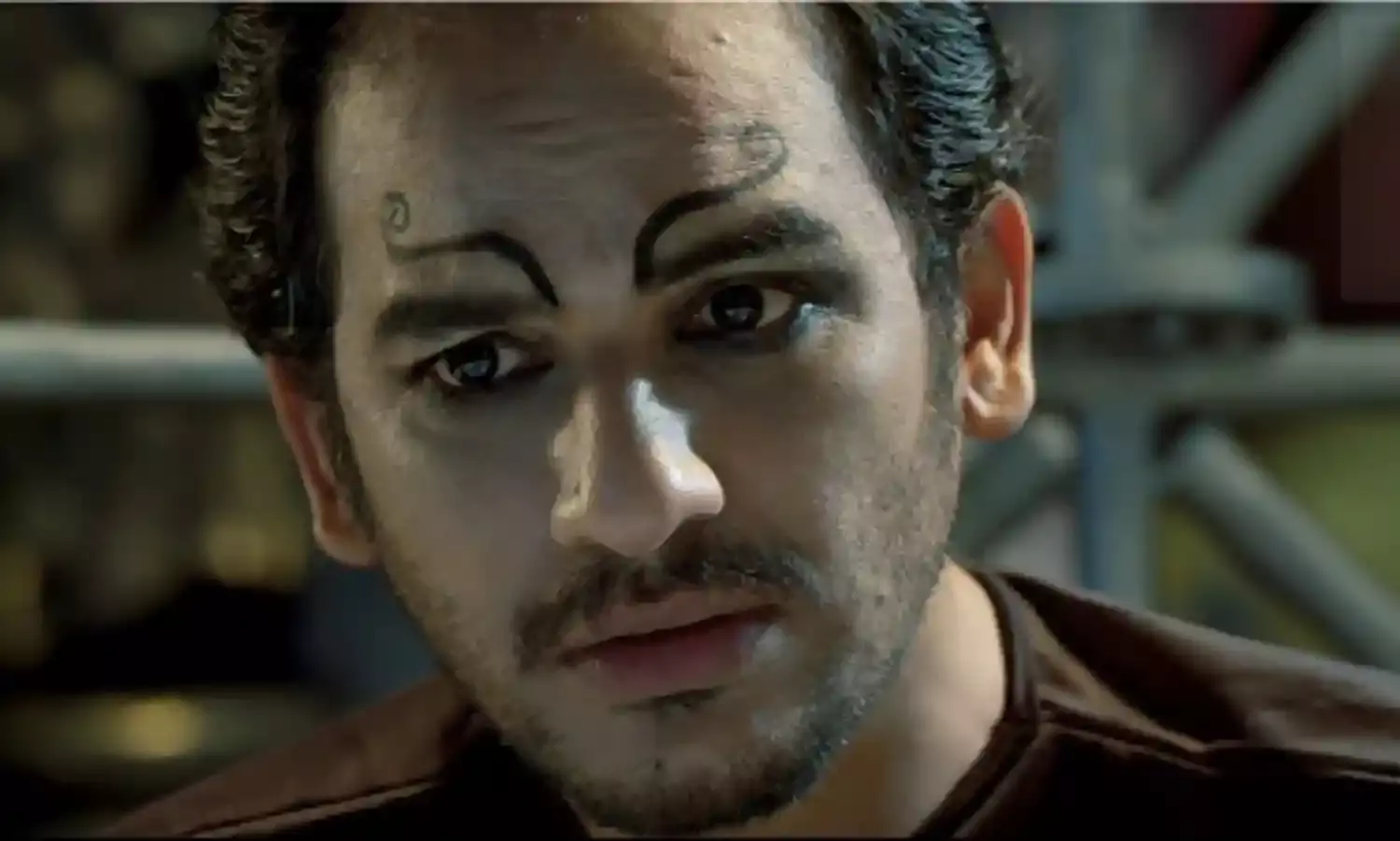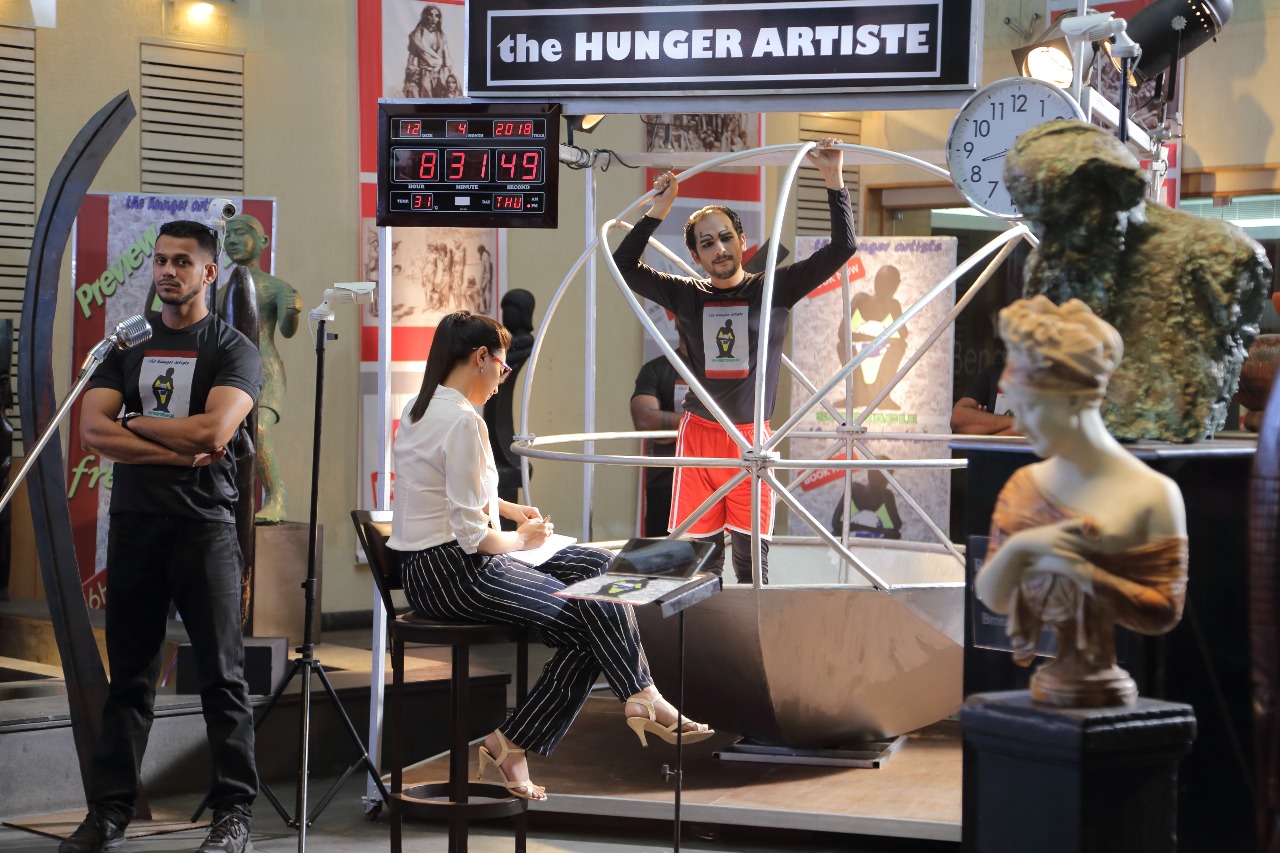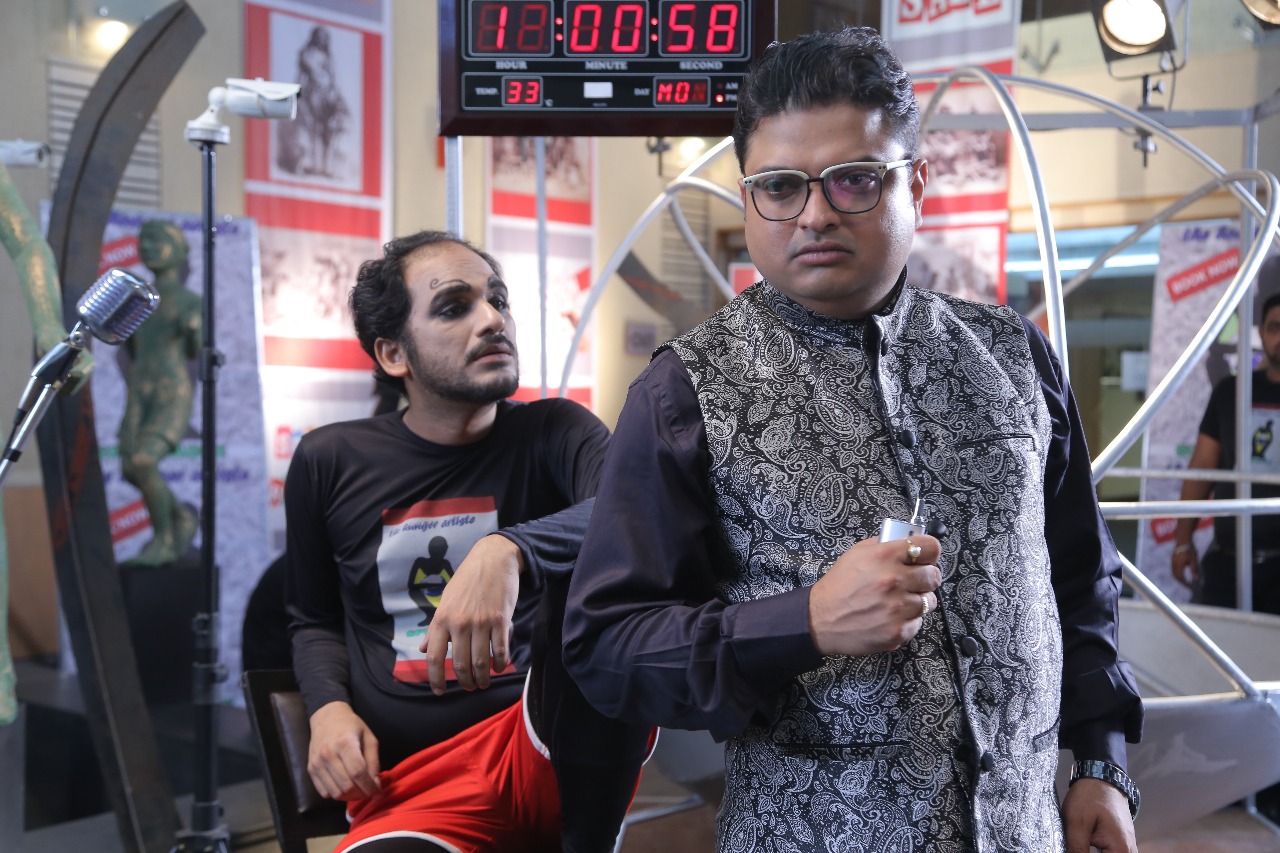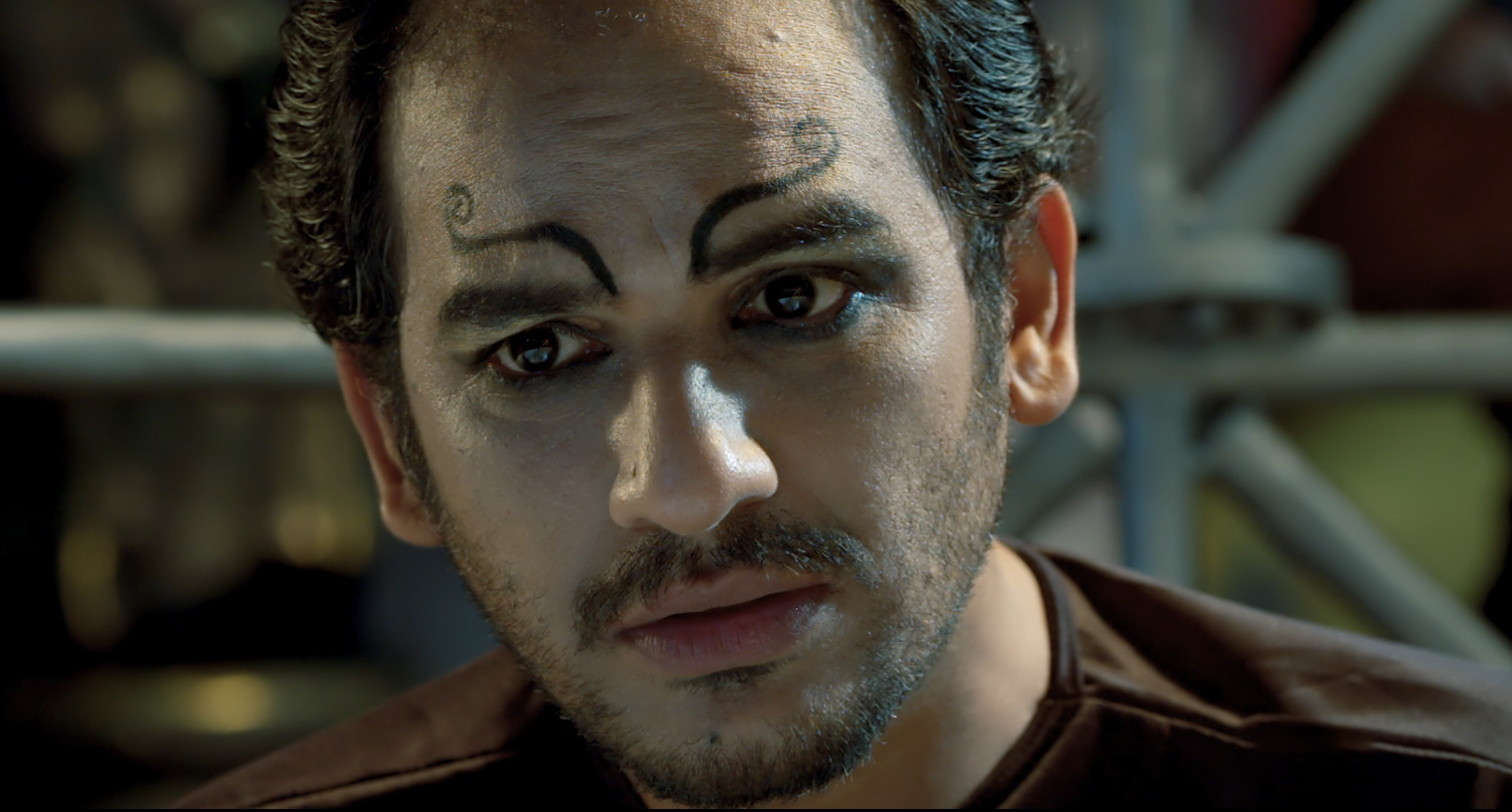Is Starvation a Performing Art?
An intriguing film

Hunger wears many faces and the variety and versatility of hunger is as incredible as it is voluminous. The word “hunger” immediately links us to biological and physical hunger for food which is a real problem for millions of people across the world. But there is a strong emotional meaning attached to the word “hunger.” It ranges from “hunger for fame”, “hunger for sex”, “hunger for power”, “hunger for money and wealth” to its many variants. But hunger as an art form according to some ‘artists’ whose metabolism enables them to remain entirely without food for many days is very different. It may be a tragic irony and a bad joke among the impoverished made to starve.
Versatile actor-filmmaker Kamaleswar Mukherjee who does not stick to any rigid genres has made a film called The Hunger Artist. How can hunger be a form of art? It was at one time. History informs us that Hunger Artists were performers, common in Europe and America in the 18th, 19th and early 20th century who starved themselves for extended periods of time for the amusement of a paying audience. The phenomenon is first recorded in the 17th century and saw its heyday in the 1880s. Hunger artists were almost always male, travelled from city to city and performed widely advertised fasts of up to 40 days. Several hunger artists were found to have cheated during their performances.
Inspired by this strange form of “performing art” noted author Franz Kafka wrote a short story named The Hunger Artist in 1922. Kafka himself emphasized that the hunger artist’s alienation was largely by his own design, because he began fasting not for artistic purposes but because he couldn’t find anything he liked to eat. He gleaned details for his story from the obscure real-life phenomenon of professional fasting, a popular form of entertainment in his time.

“I was strongly inspired to make a film on The Hunger Artist by Kafka many years ago. But it took time to materialise and now I have managed to make a film on it,” informs Kamaleswar, adding, “The story is universal, satirical and metaphorical and today, has a reference to the lives of modern-day artistes surviving in today’s market economy. The film is a critique of the put-on cultural milieu set by the exploitative market.” Rather than exploring the politics of hunger, the film tries to establish a link between hunger and art, the two blending to become an expression within the same man who is convinced that he is a “hunger artist.”
The film opens with a voice-over by Ghana, an impresario who introduces the protagonist of the film Bhuto with a plethora of information of his fasting for any and every publicly announced, “cause” that sparks his anger. Bhuto’s ability to withdraw completely from food for indeterminate spans of time for global, manmade disasters such as fasting for two days when Israel bombed Palestine, or, for five days when Boko Haram attacked Nigerians, or, for seven days when NATO invaded Libya which, Ghana suggests, underscores that Bhuto is born with a metabolic miracle that gives him the capacity for remaining without food for any number of days.
When Bhuto says that his hunger strikes did nothing to improve the conditions of victims he withdrew from food for, Ghana, who has only business in mind, convinces that Bhuto’s gift of withstanding hunger is actually an art and that he can become a performing hunger artist and win fame, money and power.
The ‘Hunger Artiste’ show begins with Bhuto being encaged and flooded with light for display in a galleried, cylindrical cage set up. Ghana takes on the role of anchor and in a very loud voice and apt theatrics, invites the viewers to witness this ‘hunger artist’ remain hungry for five, seven, ten, fifteen and twenty days. People pour in to see the fun and the thrill of a man tolerating hunger for days. Promoted by the media, fame and money gush in and the limelight blinds Bhuto who becomes arrogant, narcissistic and rude shrugging off a reporter genuinely worried about his wrongful and ruthless exploitation by Ghana and his team. Bhuto becomes a famous figure with audiences crowding to see him “perform” - which is no performance at all except the gracious bow he takes at the end of every phase of hunger. The tragedy is how masses find a man fasting for days on end very “entertaining” and they actually buy tickets to watch the “show.”

Presenting “hunger” as a “performing art” is a complete contradiction in terms. Because hunger can by no means be defined as “art” except representations of it in fine arts like painting and sculpture or still-life works which are differently layered visual expressions of hunger. He becomes the first ever hunger artist in India and is convinced that he is an artist and can go on ‘performing’ forever.
When Bhuto makes a world record of 20 days fasting at a stretch, his nerves get on edge, his physical strength bears down on him and his audience begins to dwindle. Enter Ghana who now has a new victim up his sleeve to create another reality show - he has discovered a “Slumber Artist” who can sleep on for 72 hours. A shocked Bhuto tries to persuade him with different tricks but nothing works. His life as a hunger artist is over. He is relegated to the godown forever. The word “godown” which Ghana uses reduces Bhuto down to being a ‘machine’ or an inanimate object that has lost its selling power.
Kamaleswar had to keep it short because of the funds crunch. It should ideally have been a full-length feature fleshing out the back story of Bhuto and Ghana who are metaphors of the victim and the victimiser.
Kamaleswar offers small sidebars of Bhuto’s tremendous popularity through discussion among “intellectuals”, the tremendous coverage by the media, books published on Bhuto, a statue of Bhuto installed somewhere, and the running reportage on his “performance surviving only on water”. He comes to believe that he is an artist and boasts about it. One gets also a fleeting glimpse of an airplane with Bhuto’s face painted across its body!
Ritwick Chakraborty shines as Bhuto prepped up for the ‘show’ after a routine of beauty treatments at a neighbouring parlour and steps into the circular cage with false eyebrows (like Salvador Dali’s moustache?) painted above his natural ones, clad in a pair of red pedal pushers. He does very well. Biswanath Basu as Ghana is as loud, as high-pitched and as media-savvy as he must be although he sometimes appears to be too much in the face. Priyanka Mandal as the unnamed journalist enriches her performance with her silences, her quiet looks and her worries about Bhuto’s declining health. The only moment when Bhuto might be tempted is when his widowed mother walks in to offer him his favourite coconut sweets. Bhuto declines saying he cannot cheat, he is an artist!

The cinematography sticks to blues and greys perhaps to focus on the ‘greys’ in the subject and the content. The very subtle and low-key music keeps time with the changing moods of the story while the art direction appears to be a bit clumsy and could have been more sophisticated. The lights go off suddenly, the music stops but the electronic clock on the wall keeps on beating time by the nano-second. The security guards who sit on the steps of the gallery have disappeared.
The film is an incisive and powerful indictment on how both hunger and a hunger artist can be converted into marketable objects for sale, very relevant in our completely materialistic world. But it could have been a better product with more polished production design and some more running time.
Watch it on YouTube. It is produced by Fatfish Entertainment and is presented by Pritam Choudhury. The film has already been screened at several film festivals across the Indian map.



